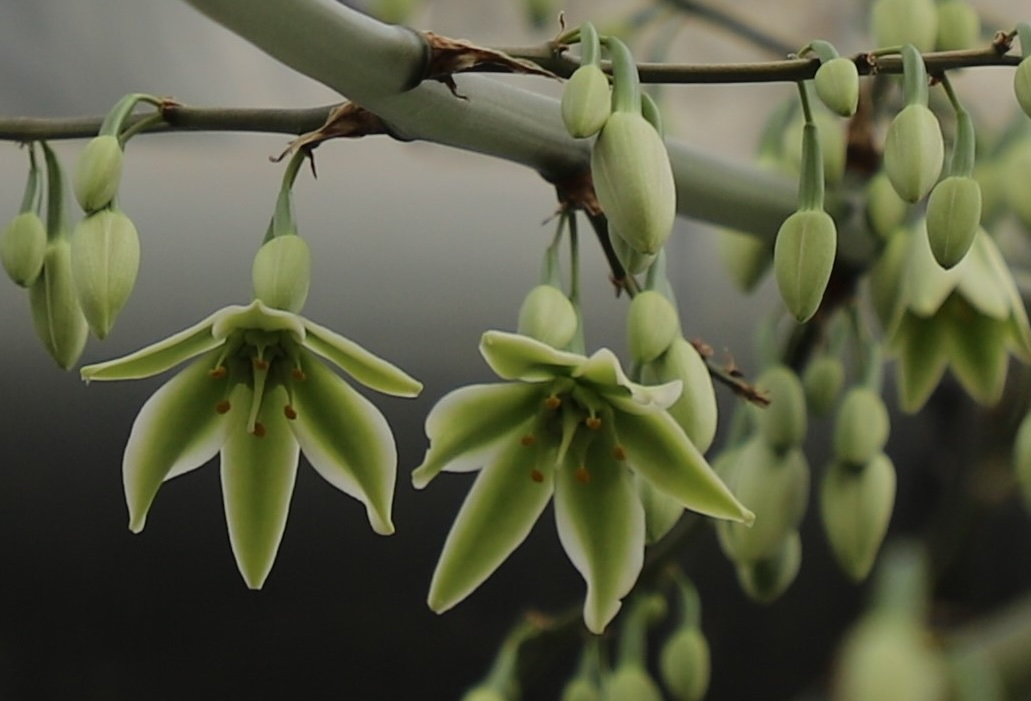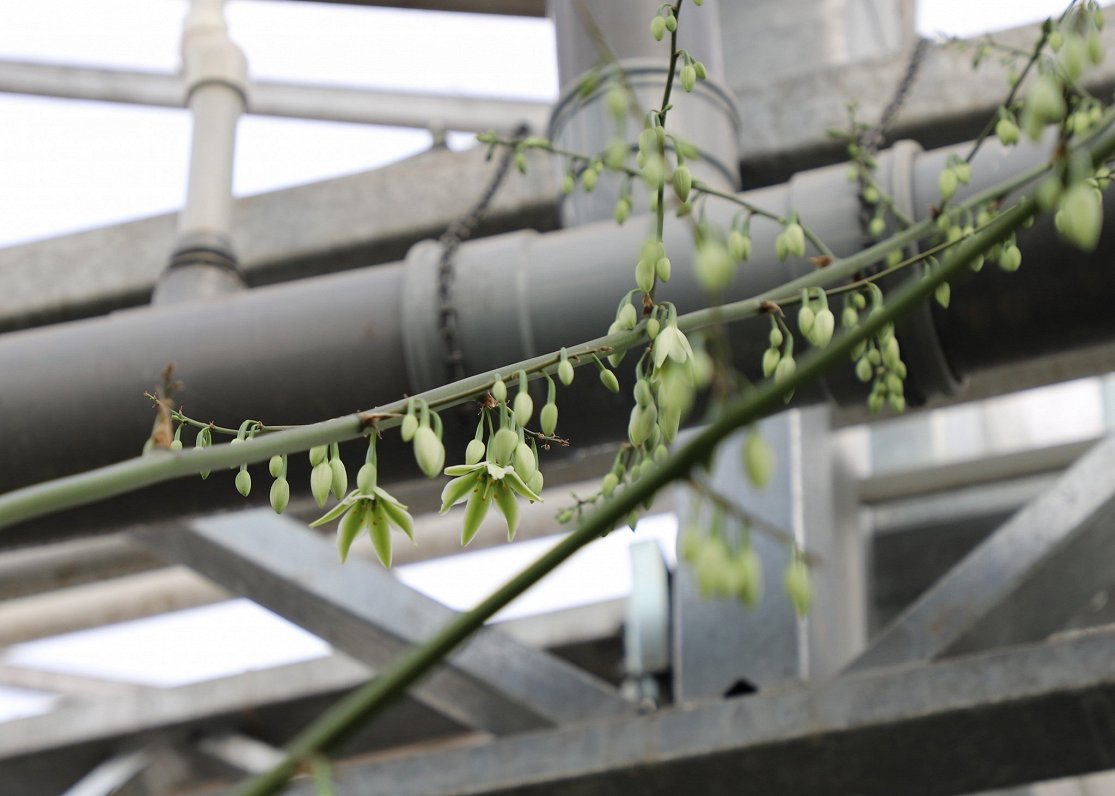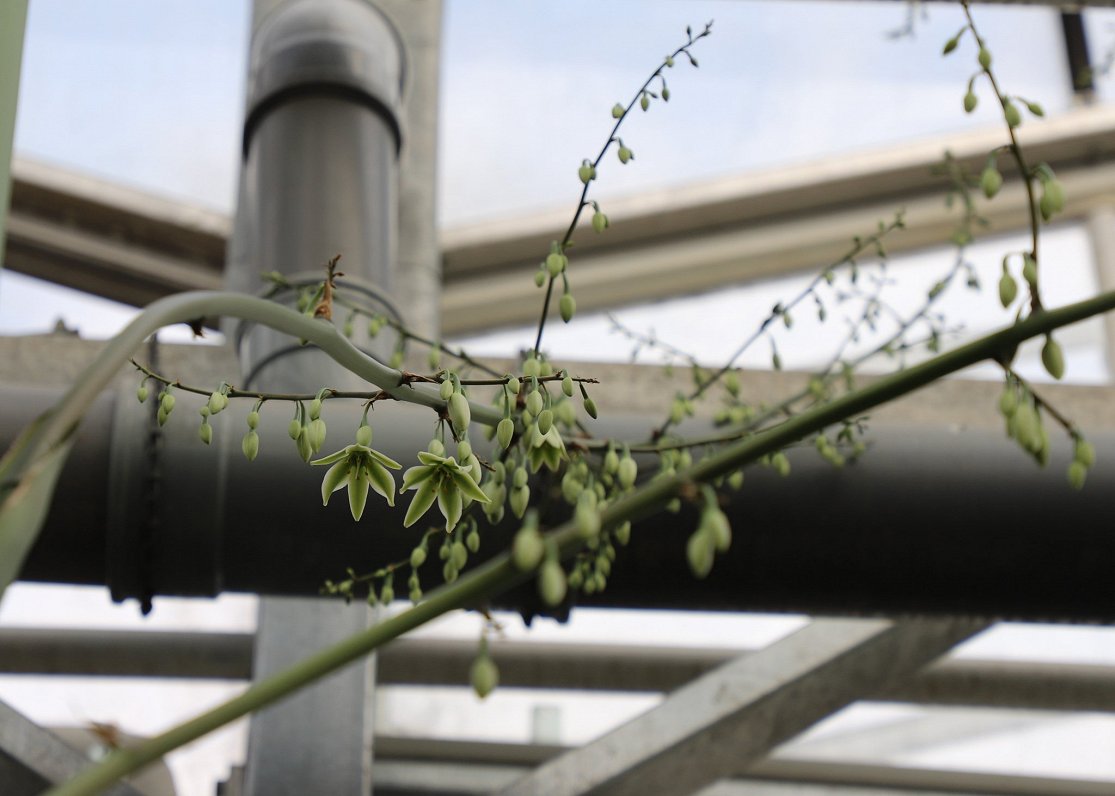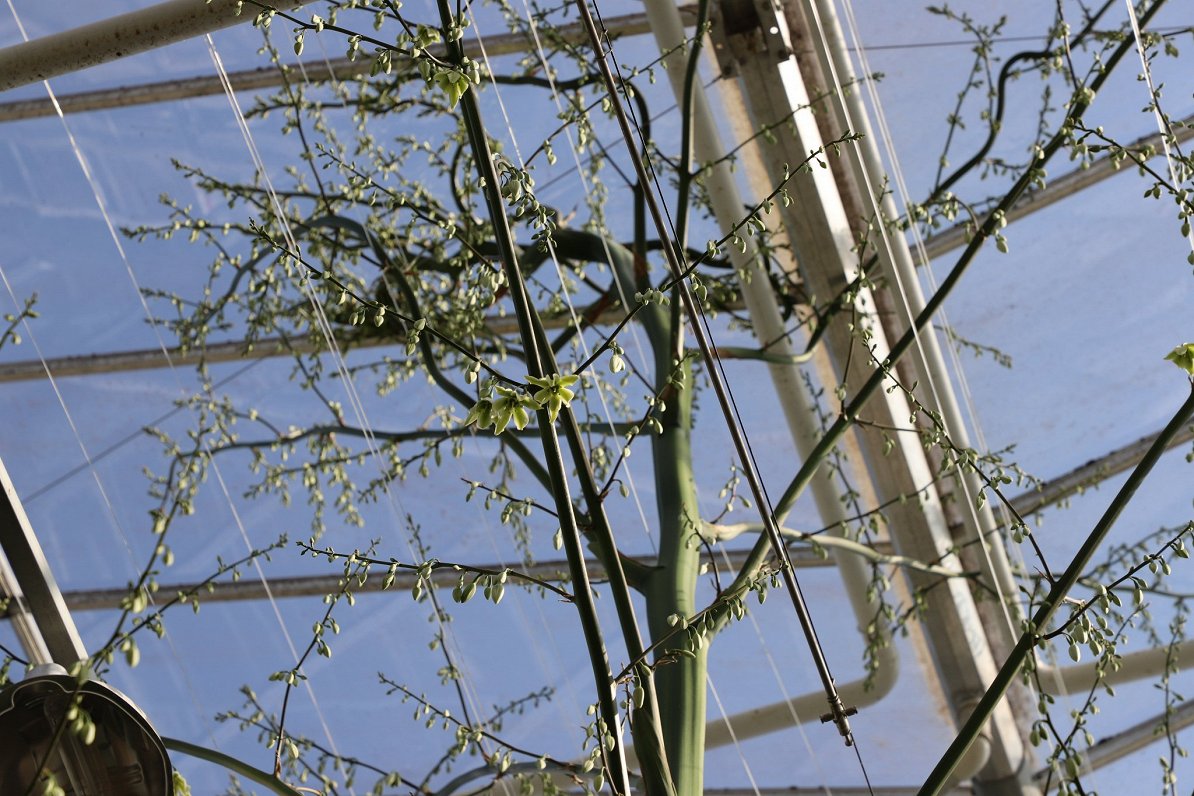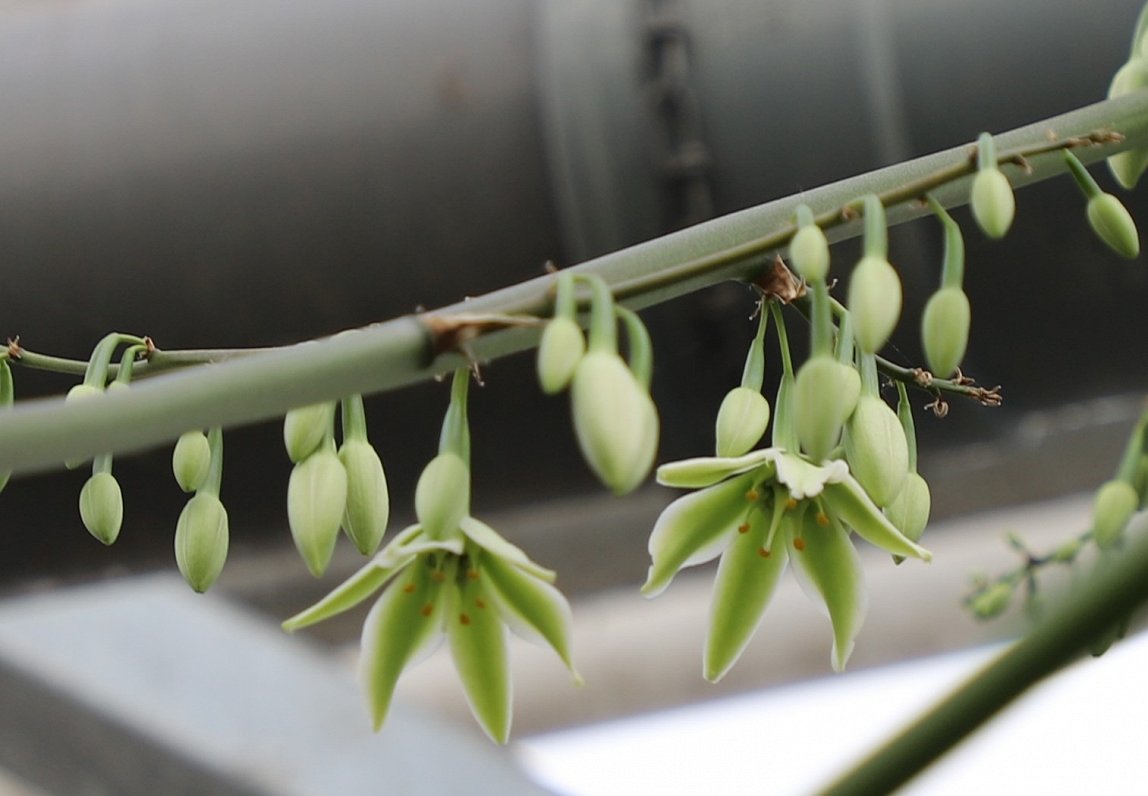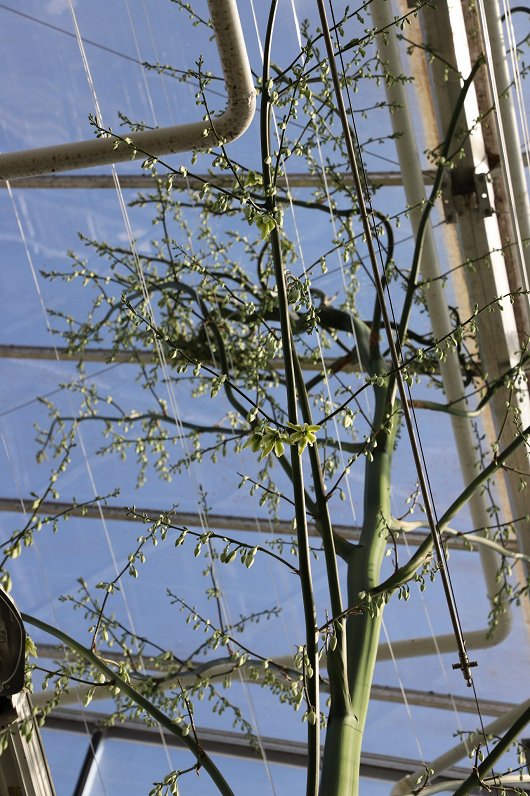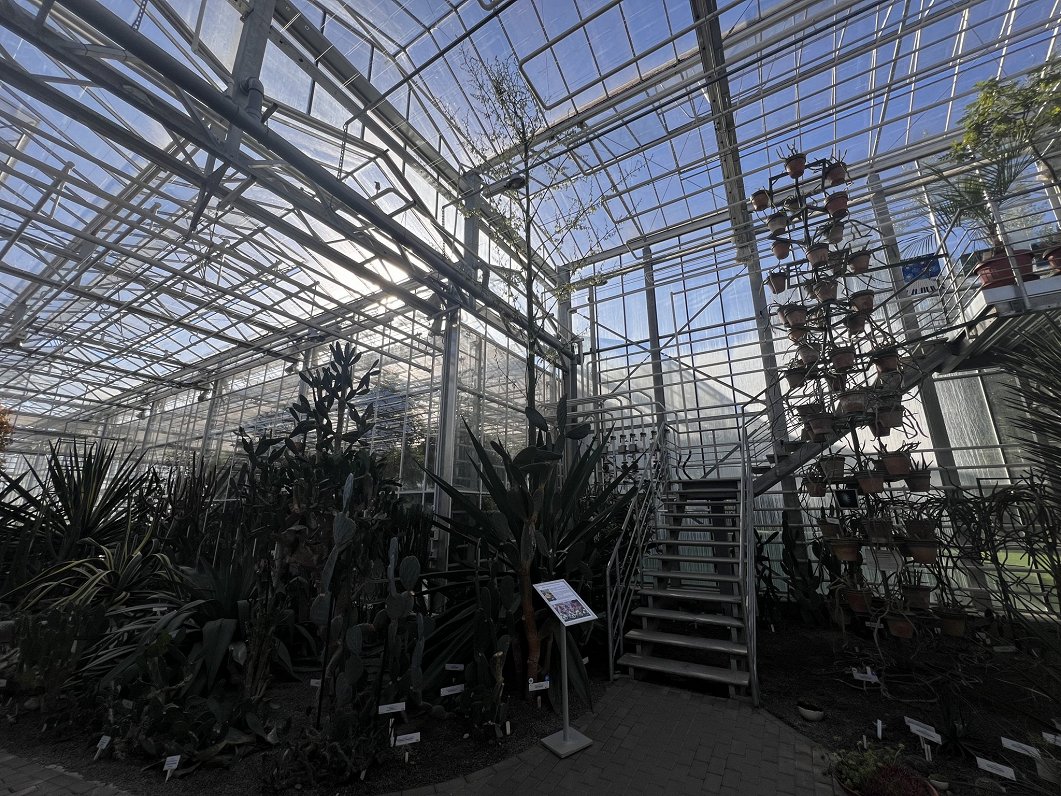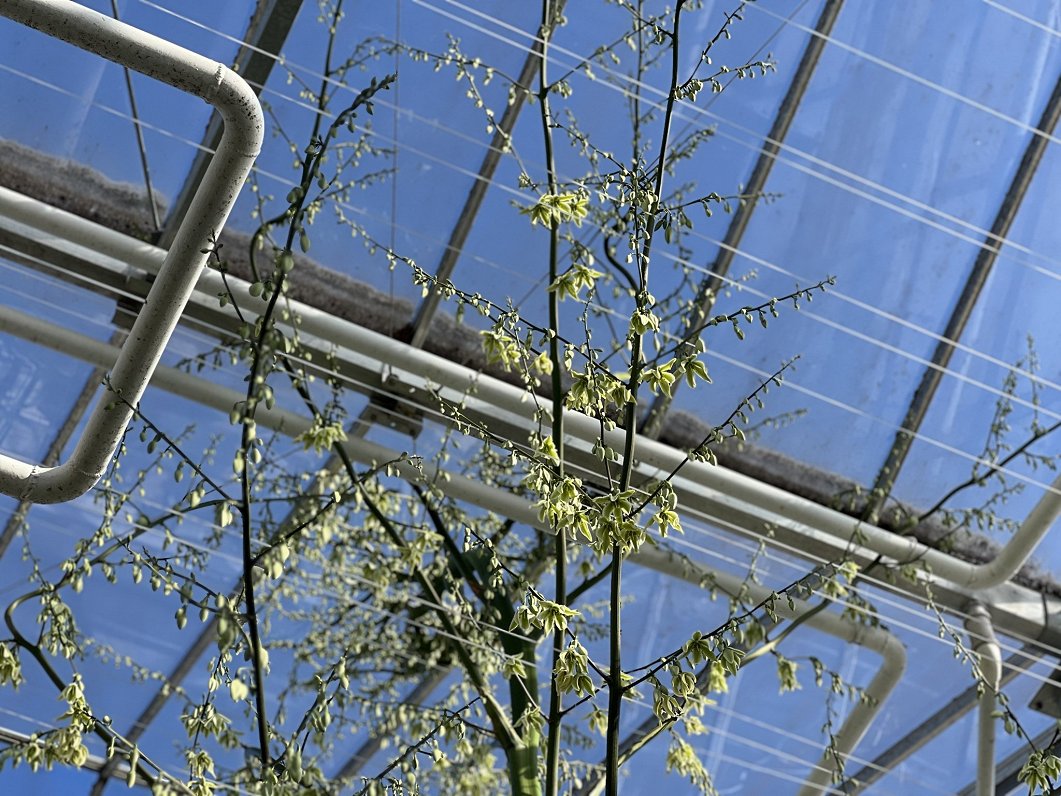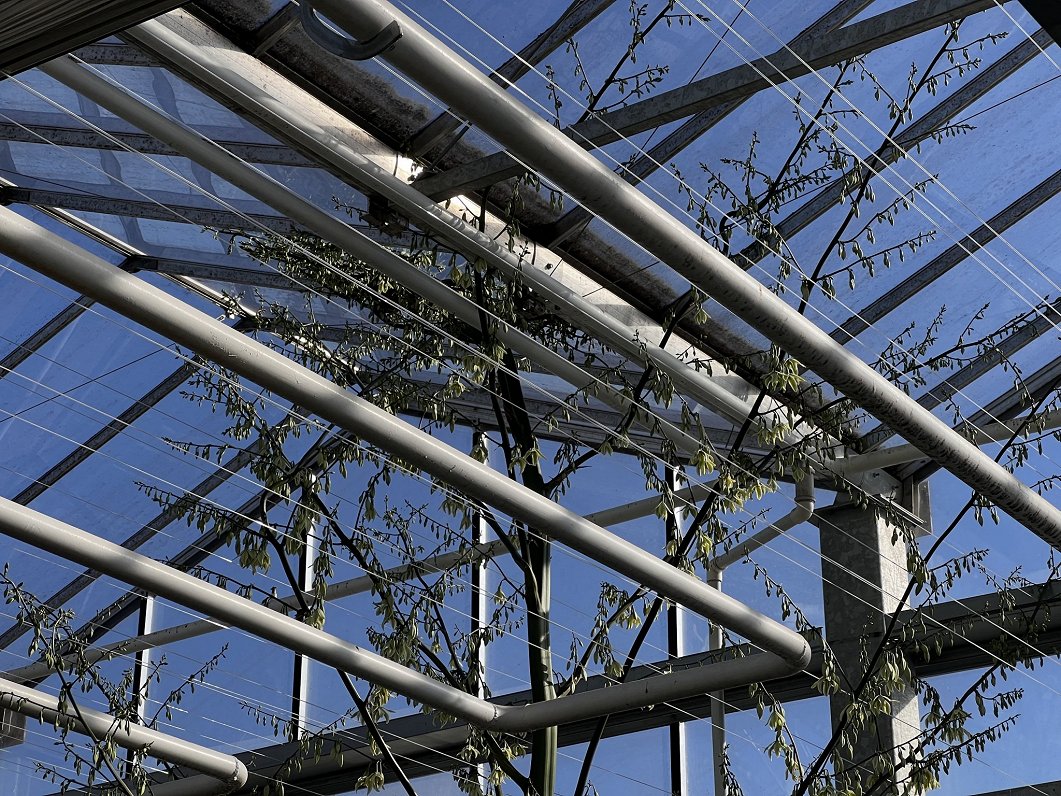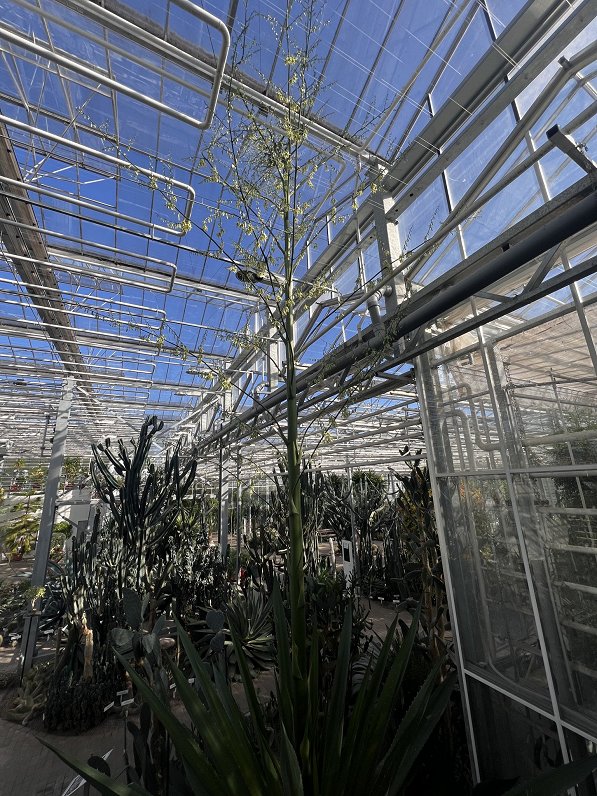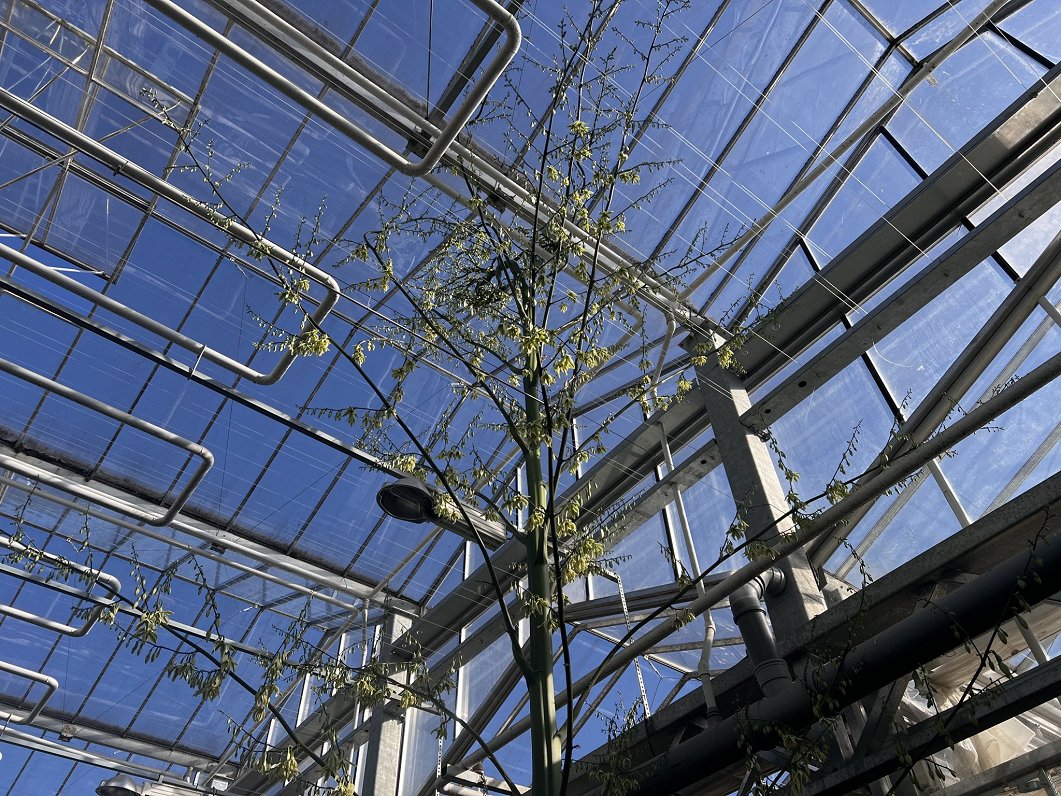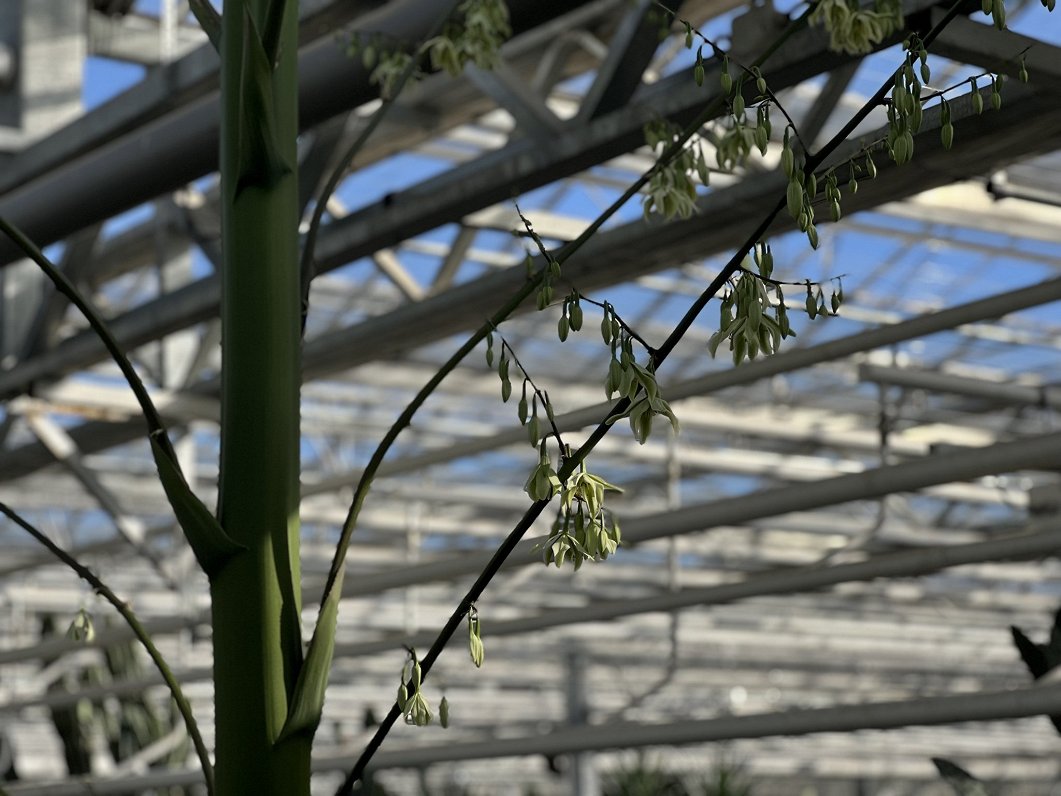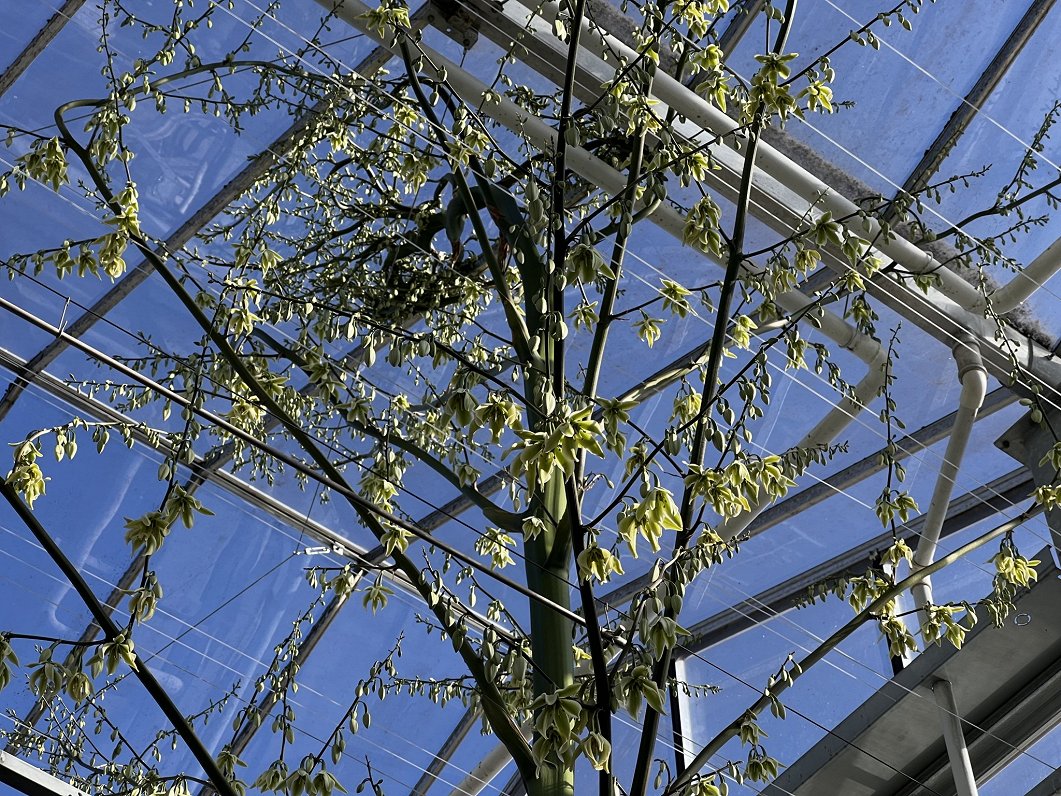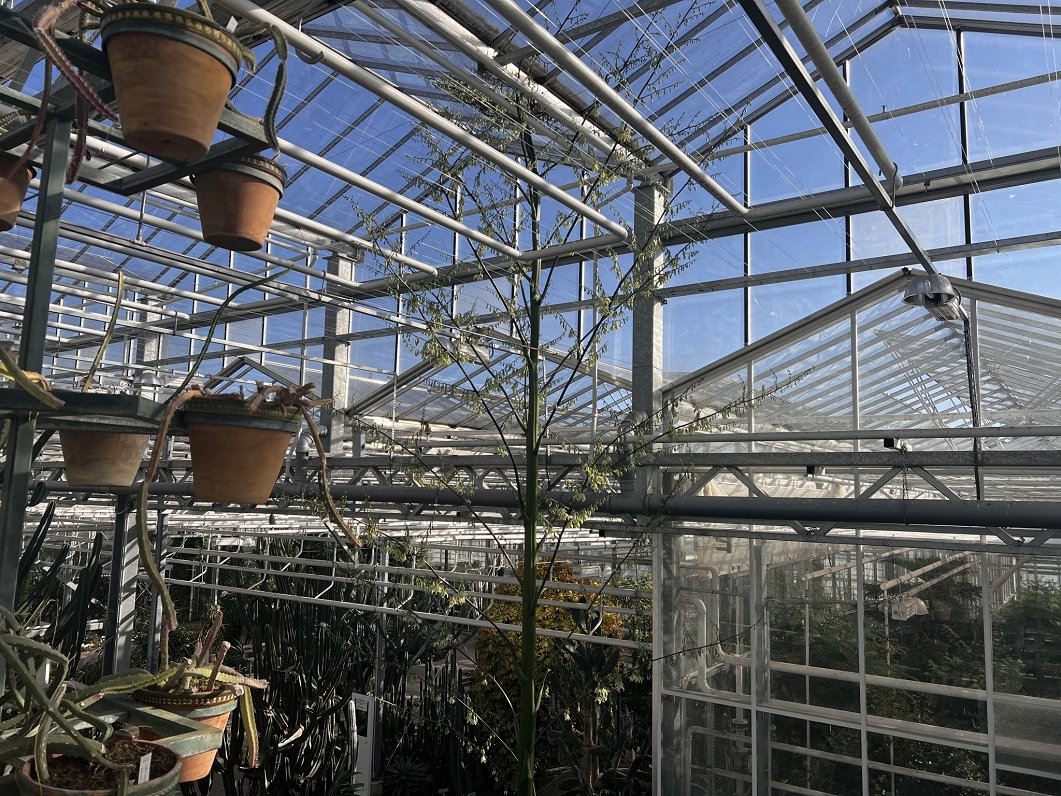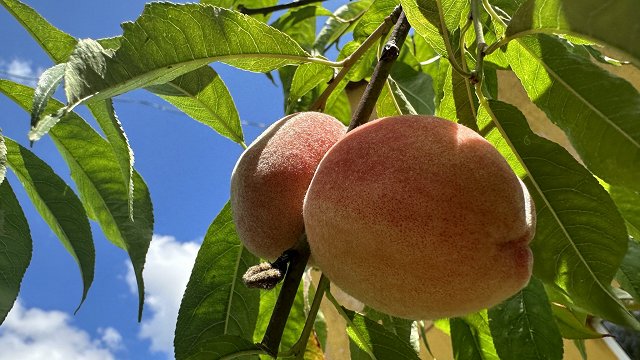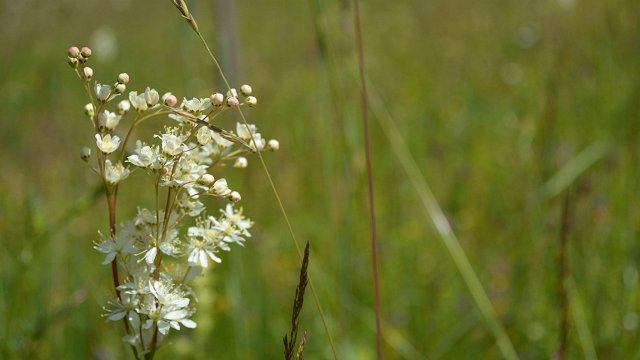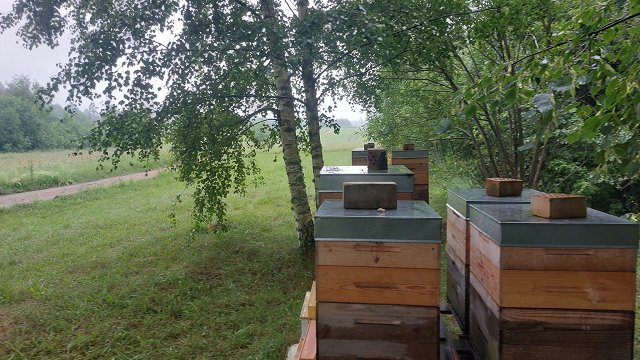The plant, which is adapted to the climate of South America and waits a much shorter time to flower in the wild, has spent most of its life in a pot, but in 2015 it was transplanted into the conservatory and has now become a huge plant. What was it like waiting for its peak, and are there any other plants in the Botanic Garden that have been waiting for years to flower?
"When the flower was still developing, I still couldn't see it, in the middle it seemed like it was something bright. Suddenly I imagined going to the altar, to Our Lady, and then when you look, you think - is there any brightness! And that's exactly what the flower was like for the furcraea," says Zane Purne, Head of the Orangery Plants Department at the National Botanic Garden, who has been caring for the 43-year-old succulent Furcraea sello since the beginning.
For more than 30 years it has grown in a pot and has only been 80 centimetres tall. Later, it was transplanted to the conservatory, where it looks much better - the plant's spiky, green leaves, which look a bit like aloe vera, are larger than a human being. In the centre of the rosette of leaves is a nine-metre-high inflorescence, on the branches of which grow numerous greenish-white flowers at least a centimetre in size. The impressive inflorescence, which has reached the glass roof and is already growing parallel to it, only started to develop in July and is now in full bloom, Zane Purne said.
"Although it has been under my care all these years, it is very difficult to say when it will flower, and which year it will be, because even in the wild there are many different physiological conditions that affect the plant. Outdoors they are a little bit different, indoors they are again quite different.
"Our version of why it flowered is simply the very warm summers of recent years. He has simply remembered where he has come from, what he has got where he is in the wild. It's all in the genes. And that's how he's blossomed," said the specialist.
The glorious peak lasts for a month, but then the plant dies.
"People are always very sad. We have also written that it flowers once in a lifetime and then dies, but the plant is already... The big one goes, but the children stay. A lot. So the species doesn't end. The plant thinks about it, it thinks about the continuation. And here you can see that it's quite rare that a flower doesn't form a seed, but a little furcraea," says Zane Purne.
The dendrological or woody plant collection of the Salaspils Botanical Garden consists of more than 4,400 species and varieties. It is the largest in the Baltics. The list of unique and rare plants includes, for example, the baldcypress (Taxodium distichum), which is the oldest and largest specimen in Latvia. The list also includes the American tulip tree (Liriodendron tulipifera), which first flowered in Latvia 20 years ago and has done so every year since. In recent years, the magnolia collection has been enriched with magnificent flowering varieties, the magnolia with unusual yellow flowers being the standout. The blooming of these unique and rare trees is a surprise, says Ludmila Višņevska, Senior Education Specialist.
"Like the Kuril magnolia or the umbrella magnolia. Suddenly you see - oh, a bud! We have a Kuril magnolia blooming this year! Well, it's such a pleasant surprise. Of course, next year and the year after, if it has already taken the trouble to do it, it will repeat it again regularly, sometimes maybe skipping a year. But really, if the tree is already mature enough to flower, then it will repeat it," says Višņevska.
But waiting for its first bloom in the Botanic Garden's conservatory is a 25-year-old green ball-shaped cactus, about half a meter across, with pale yellow needles.
Its species name is Echinocactus grusoni and it is said to be common in Mexico. It will have to wait another seven to ten years before flowers, Zane Purne estimates.
"Every plant has its own flowering time. Either it has to be tall or it has to be fat. Very many different parameters. This plant has to be a metre across and then it will flower. We are trying. We cannot over-fertilize the cactus, we cannot just give nitrogen, nitrogen, so that it just grows and grows. It also has to keep its naturalness," Purne said.
The specialist says that there are other plants in the garden waiting to bloom, but this particular cactus would be very interesting to see, as its size is impressive.
